You have a great idea to start a new business. You have come up with what you believe to be the perfect business name and logo, and you want to get started on printing up your marketing material. Before you do, you should consider whether you have taken adequate steps to:
- protect the intellectual property in your brand before it becomes public; and
- ensure that you will not infringe on any registered trade marks.
Many businesses commence trading without giving much thought to this important issue. Failing to register and enforce your rights in your intellectual property can cost you valuable time, money and goodwill. You may be required to rebrand if you infringe on another person’s rights. You could also be required to pay to the rightful owner of a registered trade mark, damages or an account of profits, which may be significant.
Am I protected?
Whilst it is necessary to register a business or company name (and often desirable to register a domain name), it does not give you absolute proprietary rights to the exclusion of others in the name. To gain adequate protection, you must register a trade mark.
What is a Trade Mark?
A trade mark is a sign used, or intended to be used, to distinguish goods or services dealt with or provided in the course of trade by a person from goods or services so dealt with or provided by another person. This can commonly include, but is not limited to, any letter, word, name, signature, numeral, device, brand, heading, label, ticket, aspect of packaging, shape, colour, sound or scent.
Whilst trade marks can include the above elements, not all words for example can be trade marked. Words of a descriptive nature will often be refused registration as they are not capable of distinguishing your goods or services over other providers of the same goods or services. Non-descriptive words, invented words, signatures and logos are usually registered without issue as they are often considered capable of distinguishing one trader’s goods or services from others.
When registering a trade mark, you must select one or more categories of goods or services in which you wish to register the mark. There is a schedule contained in the Trade Marks Regulations setting out each of the classes of goods and services for you to select from.
It is important to remember that you must be using or intending to use the trade mark in relation to the goods and / or services in which you wish to register the trade mark. If you fail to use the trade mark in relation to those goods or services, then it can be removed from the Register.
What protection does a trade mark provide?
Once you have registered a trade mark, you obtain the exclusive rights to use the trade mark and to authorise other people to use the trade mark in relation to the goods and / or services in which the trade mark is registered. This means that you can generally prevent others from trading using that same mark, or a very similar mark, in relation to the same goods or services.
If, as the registered owner of the trade mark, you can establish infringement on your trade mark, you can seek to obtain an injunction as well as damages or an account of profits at your option.
Upon registration, you are granted 10 years’ protection from the filing date of the application. Registration can be renewed for further 10 year periods. If you fail to renew the registration, then it will expire and be removed from the Register 6 months after the date on which the registration expired.
Who should own the trade mark?
For asset protection purposes, assets should be separated from trading liabilities where possible. For this reason, many people choose to establish asset holding entities to hold their intellectual property rights. When doing so, it is important to document a licence agreement between the asset holding entity and the trading entity, enabling the trading entity to use the intellectual property rights.
Where do I start?
Before deciding on a name, you should always conduct adequate searches to ensure that your chosen name is not already being used in some way which could affect your ability to gain adequate proprietary rights in the name and / or mark.
Application fees are payable to IP Australia to register your trade mark. Refunds are generally not given if your trade mark is refused registration. If you are unsure of whether you will gain registration, or which classes of goods and services in which you should apply for registration, then you should consult consult with a Lawyer before commencing the process.
There are two ways you can apply for a trade mark online. You may wish to take advantage of the TM Headstart service. This service allows you to have a pre-assessment conducted by an IP Australia examiner prior to filing your full application. The major benefit of this service is that you have the opportunity to amend your application prior to filing the full application, or abandon the application all together, if the examiner provides an adverse report. This reduces your financial outlay if you learn that registration is likely to be refused. This service does however cost more in total than a standard application, and cannot be used for certain types of applications (for example, series trade marks). It is important to remember that you do not obtain a filing date until the part 2 fee has been paid when filing through the TM Headstart process.
How can Social Law Co. help?
We have significant experience in assisting our clients, and can assist you, with the following:
- conducting the necessary searches;
- providing you with advice on whether your marks are registrable;
- assisting you to determine in which classes of goods and services you should apply to register a trade mark;
- providing you with advice on structuring the ownership of your intellectual property;
- applying for your trade mark on your behalf;
- providing you with advice and documentation for any licensing or assignment of your intellectual property rights; and
- enforcement of your rights.
Contact us to learn more – Call 1300 411 884.




